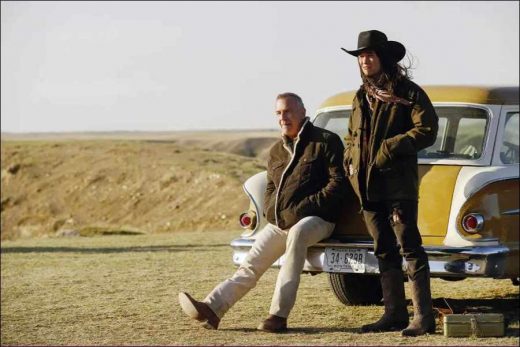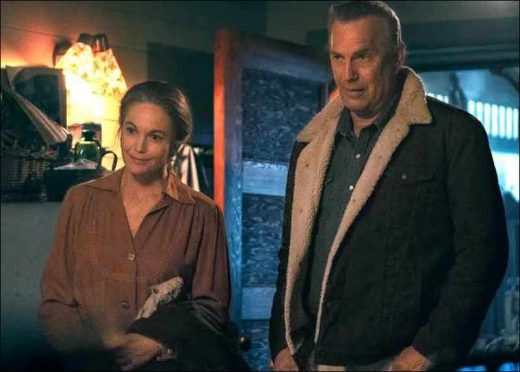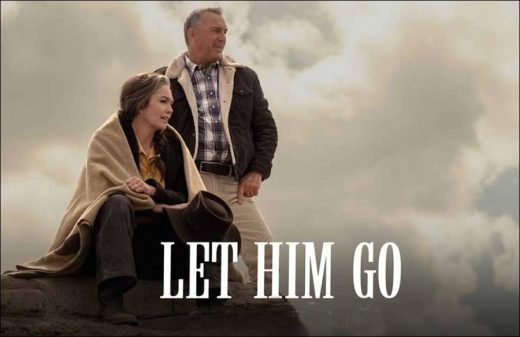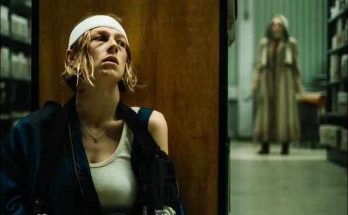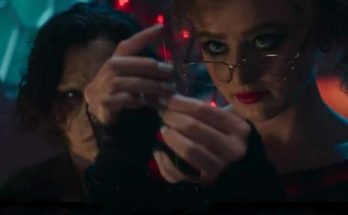Let Him Go is a melancholic film that keeps you on your toes while looking at the problem of social violence in 1960s America through the secrets of a family. Thomas Bezucha also makes room for Diane Lane and Lesley Manville in “Let Him Go” with his subtle script. Peckinpah and “A History of Violence” create a well-shot neo-western that makes its impact felt.
Writer-director Thomas Bezucha, from 1964, is adapting Larry Watson’s 2013 novel to the cinema. The book, which was set in North Dakota in 1951, is taken to Montana in 1961. It moves forward with a perception drawn to the eve of the modernization of the Western genre. In fact, ‘social violence’ brings to mind what Sam Peckinpah did in this genre in those years.
In his studio product “The Family Stone” (“The Family Stone”, 2005), which started as a popular comedy, he drew attention to the secrets of the American family and instilled an ‘independent spirit’ with striking dialogues, sexual identity issues and controversial themes. The film, which started out like “Meet the Parents”, 2000, turned into a drama with a plot, the successor to “Happiness”, 1998 and “American Beauty”, 1999.
Residing in Montana for the second time
In his first film, “Big Eden”, which was toured in independent festivals in 2000, the writer-director sent an LGBTI+ individual to the resort town of Montana, in the northeast of his country. The main character, who went to the holiday resort from the treacherous metropolitan life of New York, inevitably found himself in a ‘family’ without any ‘connection’.
Here he is again in Montana, and once again wanders into the western genre to reveal the secrets of the holy family. He creates a dark portrait of the ‘Wild West’. He is making the most dramatic and melancholic film of his career. It is a tense critique of social violence that includes mourning, hostage, death, road and revenge…
Kevin Costner, who portrays the former sheriff, appears largely in line with the character and role he continued as actor-director in 2003’s “Open Range”. It doesn’t make you feel like you’re over 60.
But rather, a dramatic structure is being established that is dominated by Diane Lane and revolves around her. We have the opportunity to witness her rebellion against the male-dominated order through all generations. But he is not the one who takes revenge through violence.
A Melancholic Feeling
“Let Him Go” looks at the rebellion and chaos of a family. Cinematographer Guy Godfree struggled to shoot largely dark scenes. While focusing on natural light, especially in the death scene, the boy is seen standing in front of the camera and accompanying the ‘clarity’ in the background. Cinematography supports the film’s almost stylized state.
The extremely balanced and conscious placement of the general shot angles makes us feel the realities of the family with secrets in the 1960s USA. The compositions of Michael Giacchino, who revives the rhythm through the ‘tension that keeps it on its toes’, are added along with violin, piano and lute melodies. The Oscar-winning composer ends his second work with the director in harmony.
Everything for family roots
In this way, we believe even more in the conflict between families. Although the film starts as a ‘mourning film’, it does not stop at that point for long. He immediately turns the steering wheel and enters a balanced ‘neo-western’ or ‘western-noir’. While getting there, he can include genres such as ‘hostage thriller’, ‘road movie’, ‘dysfunctional family movie’, ‘vigilante movie’.
There’s a flare to all of this with the players’ care. This realism revives the projections of Bezucha’s successful script. To a large extent, “Let Him Go” introduces family conflicts in pursuit of the deceased son’s son. Especially the dark conflict in the finale also announces a believable drama between Lesley Mansville and Kevin Costner.
It can be said that Manville, as Blanche, the head of the Weboy family, comes across with an authenticity that is ‘indistinguishable from Southern Gothic characters’ with her local accent. His spirit also adds a lot to the film. It’s mind-blowing to struggle so much for the heir of a single child. It makes you forget the mourning event even more.
“Let Him Go” is a movie powered by its balanced scenes and good characters. We only see Kevin Costner keeping up with the order, turning into a kind of “The Horse Whisperer” (“The Horse Whisperer”, 1998). The reference to Redford’s movie in one scene is enjoyable. But other than that, all the characters are fine.
Even though a more suitable name is being sought instead. Lane and Manville’s conflict with their maternal instincts brings about an effective feminist struggle in the American West. This actually extends to a striking depiction of geography where social violence flares up.
With the fire scene in the last 30 minutes, it is seen that Bezucha actually preferred naturalness and made the effect of the melancholic family table felt. There is a great deal of inspiration in the destruction of everything that goes back to “Mirror” (“Zerkalo”, 1975).
After Cronenberg’s adaptation of a graphic novel, “A History of Violence”, 2005, we watch a sister film to it. In this situation, doors are opened that have a great impact on us. The Tom-Eddie Stall couple of Viggo Mortensen and Maria Bello appear here as if they are 10-15 years older.
Both their wild tension and their western-noir vein are used structurally. Today’s minimalist town motif is replaced by a static and minimal structure in the past. “Let Him Go” can be considered the successor to Cronenberg’s work, which would become a modern classic in the genre/hybrid genre. In this respect, it increases its chances of being striking with its well-shot scenes.
Let Him Go (2020)
Directed by: Thomas Bezucha
Starring: Diane Lane, Kevin Costner, Lesley Manville, Will Brittain, Jeffrey Donovan, Kayli Carter, Booboo Stewart, Bradley Stryker, Adam Stafford, Connor Mackay, Aidan Moreno
Screenplay by: Thomas Bezucha
Production Design by: Trevor Smith
Cinematography by: Guy Godfree
Film Editing by: Jeffrey Ford, Meg Reticker
Costume Design by: Carol Case
Set Decoration by: Amber Humphries
Art Direction by: Cathy Cowan
Music by: Michael Giacchino
MPAA Rating: R for violence.
Distributed by: Focus Features
Release Date: November 6, 2020
Visits: 57
